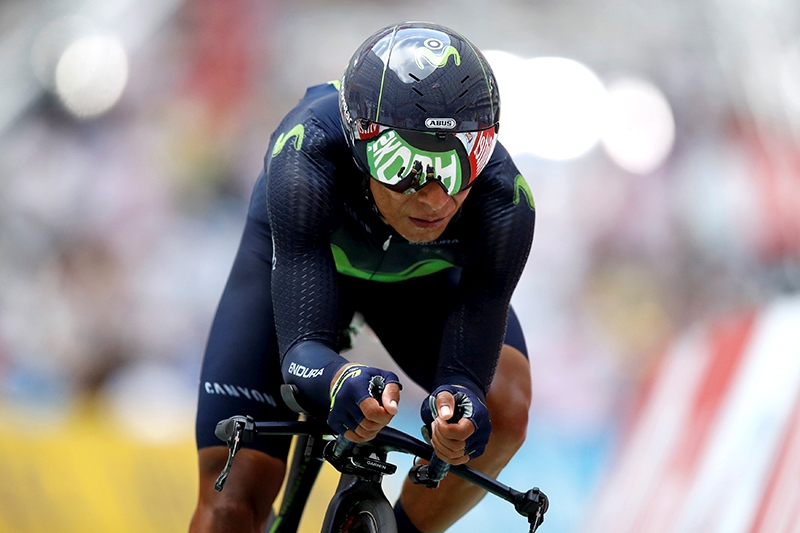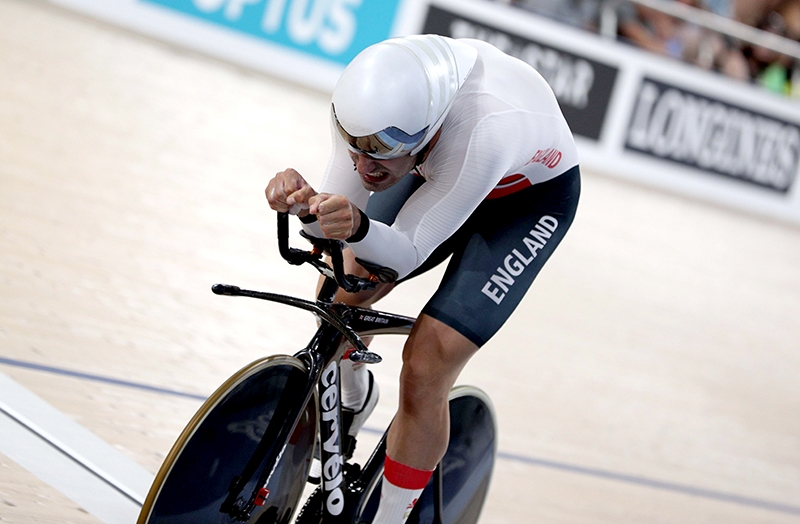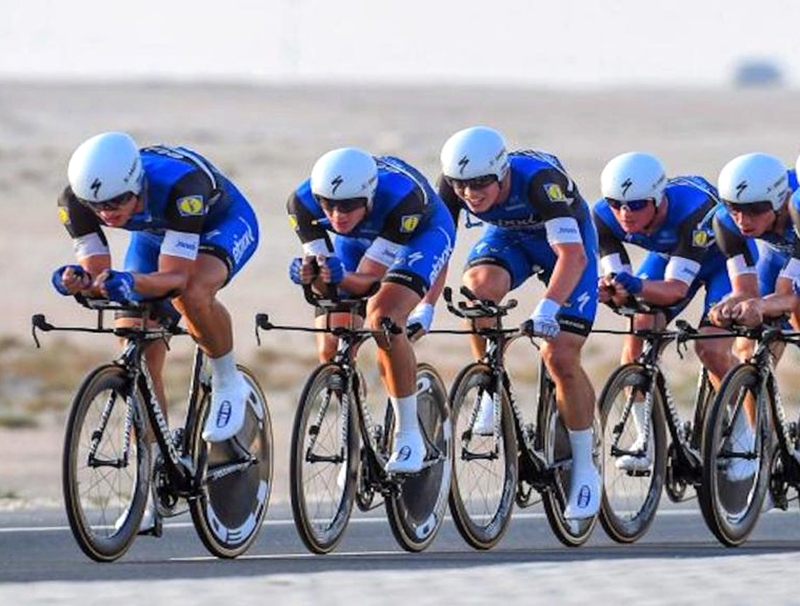You are viewing 1 of your 1 free articles. For unlimited access take a risk-free trial
Cycling aerodynamics: can aerobars hinder your breathing efficiency?

If you’re a cyclist, you need to pay great attention to your cycling aerodynamics. That’s because the lion’s share of the energy you expend on the bike is used for overcoming air resistance. The word ‘aero’ tends to conjure up images of super-advanced frame designs, fancy cycling helmets, deep rim wheels and skin tight clothing. But while these are all important factors in determining how much drag you experience, the most important factor by far is your riding position. That’s because aerodynamic drag on the bike is strongly influenced by your torso angle. In a nutshell, the more upright your riding position, the higher the drag you’ll experience. Decreasing your torso angle (ie lowering the chest closer towards to handlebars) reduces drag, helping you to ride faster.
Although it’s possible to get down really low on drop handlebars, it can be quite uncomfortable to maintain this posture during longer events, which explains the popularity of aerobars. These place a cyclist in a position where the trunk is flexed forward and the elbows are close to the midline of the body - a position known to improve cycling aerodynamics and time trial race performance compared to more upright cycling positions using conventional handlebars. However, while aerobars provide aerodynamic advantages, some recent research suggests that there are drawbacks to their use too because they can impair your breathing efficiency.
Aerobars in practice
Scientists decided to investigate the respiratory effects of using aerobars in eleven endurance trained male cyclists [Med Sci Sports Exerc. 2017 Dec;49(12):2578-2584]. In particular, they wanted to find out whether the low riding position on these bars affected the respiratory muscles’ ability to function efficiently (to open up lung volume and draw in air). They also wanted to discover if there were any knock-on effects that could affect performance.All the cyclists underwent three separate bouts of cycling in the lab at 70% of their peak power output (hard). However, the position they adopted varied in each trial: in one trial, they positioned themselves on aerobars; in another they used the drops of conventional handlebars; in the third, they rode more upright while grasping the brake hoods. The cyclists’ metabolic and ventilatory responses were measured in all three trials and a special device was used to measure the pressures generated in the diaphragm.
The findings
The main finding was that compared to an upright position riding on the hoods, the aerobar position significantly increased the work of breathing and the ‘ventilatory equivalent’ for oxygen and carbon dioxide. In plain English, this meant that in order to breathe in a given amount of oxygen (to fuel exercise), their respiratory muscles had to work harder and more rapidly – an effect the researchers described as ‘ventilatory inefficiency’. Moreover, this inefficiency was strongly correlated to the degree of thoracic restriction. In the aerobar trial (elbows narrow) the chest was restricted whereas in the handlebar and brake hood trials, there was less restriction and less drop in ventilator efficiency.Implications for cyclists and triathletes
What are the implications of this study for cyclists and triathletes who use aerobars? Well, as the researchers themselves put it: “Aerobars significantly increase the mechanical cost of breathing, leading to greater ventilatory inefficiency compared to upright cycling”. In other words, while you’ll gain aerodynamic efficiency using aerobars, your breathing efficiency will drop compared to a more upright position, especially bars where the elbows are placed in a narrow position. However, while it seems there’s a ventilatory cost to an aerobar position it’s not all bad news. Firstly, the gains in performance by being able to reduce wind drag are large enough to outweigh any respiratory drawbacks (cyclists do rider generally faster using aerobars). Secondly, research also shows that regular inspiratory muscle training (IMT – eg using devices like PowerBreathe) can help improve ventilatory efficiency in cyclists Front Physiol. 2017 Mar 8;8:133. doi: 10.3389/fphys.2017.00133. eCollection 2017, which could help overcome the effects described above.Practical suggestions
- If you’re a regular user of aerobars, try adding in some IMT training into your programme to improve your ventilatory efficiency.
- Whether you use aerobars or not, don’t ride with a completely flat torso when trying to minimise wind drag. Research shows that a torso angle of around 8 degrees is actually the optimum for minimising wind dragJ Biomech. 2014 Mar 4. pii: S0021-9290(14)00140-7.
- During longer events, an ideal aero position may be unsustainable. Know when best to deploy your optimum position (during high-speed sections and into the wind) and when to ease up.
- Don’t ignore your body’s individualities. You are unique and so should be your riding position. Unless you exactly match a pro-riders physiology (unlikely), you shouldn’t try to mimic their exact riding position!
Newsletter Sign Up
Testimonials
Dr. Alexandra Fandetti-Robin, Back & Body Chiropractic
Elspeth Cowell MSCh DpodM SRCh HCPC reg
William Hunter, Nuffield Health
Newsletter Sign Up
Coaches Testimonials
Dr. Alexandra Fandetti-Robin, Back & Body Chiropractic
Elspeth Cowell MSCh DpodM SRCh HCPC reg
William Hunter, Nuffield Health
Keep up with latest sports science research and apply it to maximize performance
Today you have the chance to join a group of athletes, and sports coaches/trainers who all have something special in common...
They use the latest research to improve performance for themselves and their clients - both athletes and sports teams - with help from global specialists in the fields of sports science, sports medicine and sports psychology.
They do this by reading Sports Performance Bulletin, an easy-to-digest but serious-minded journal dedicated to high performance sports. SPB offers a wealth of information and insight into the latest research, in an easily-accessible and understood format, along with a wealth of practical recommendations.
*includes 3 coaching manuals
Get Inspired
All the latest techniques and approaches
Sports Performance Bulletin helps dedicated endurance athletes improve their performance. Sense-checking the latest sports science research, and sourcing evidence and case studies to support findings, Sports Performance Bulletin turns proven insights into easily digestible practical advice. Supporting athletes, coaches and professionals who wish to ensure their guidance and programmes are kept right up to date and based on credible science.












